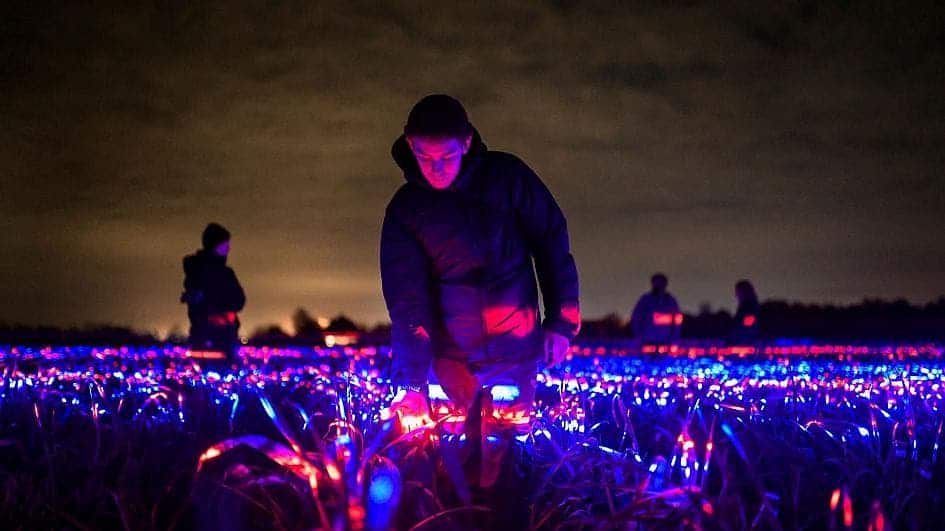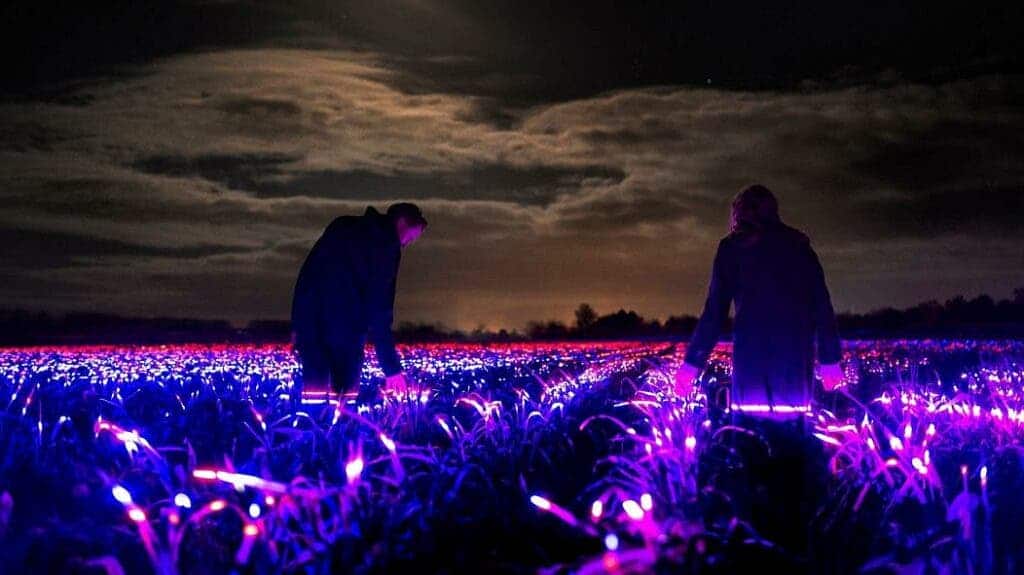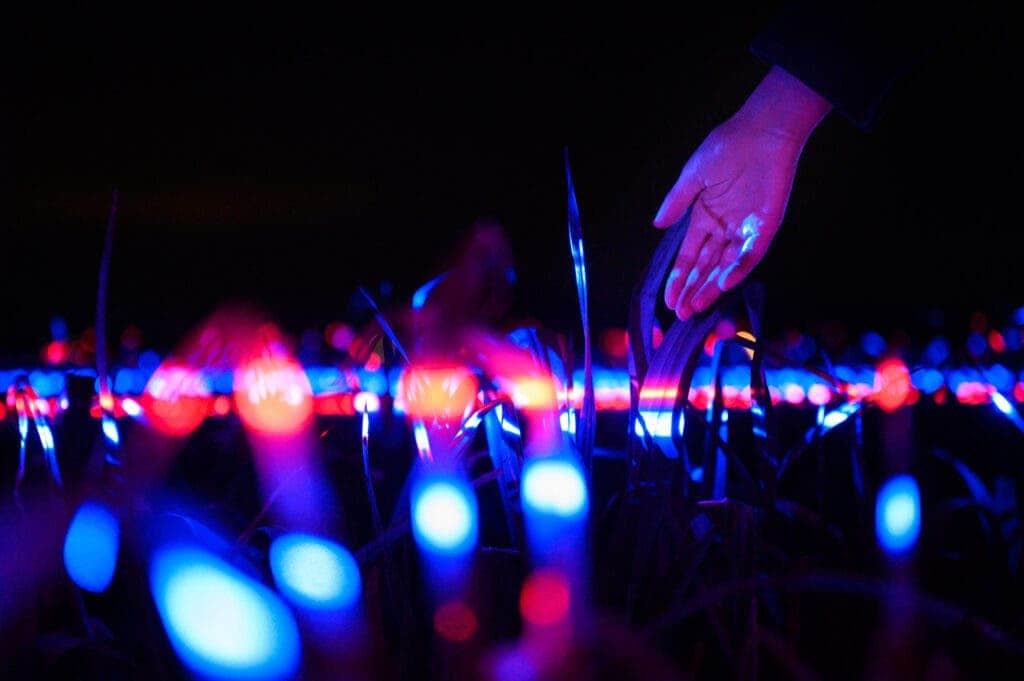
On a plot of farmland in Lelystad, Netherlands, art and technology merge in a stunning light show. During the day, the 20,000-square-meter field looks like any piece of farmland, but by the night it is transformed into a psychedelic wonderland.
Don’t be fooled by the pretty lights, though. The installation actually serves to enhance crop growth, improving yield and reducing the need for pesticides by 50%.

The project, known as GROW, is the brainchild of Dutch designer Daan Roosegaarde, founder of Studio Roosegaarde.
Roosegaarde used a mixture of blue, red, and ultraviolet “dancing lights” that shine across a field of leeks.

Roosegaarde was inspired to embark on this project after a rare encounter with rural Netherlands. A self-confessed urbanite, the designer had spent very little time appreciating his country’s agricultural landscape — but it all changed after he made a visit to the farm.

The Dutch designer worked closely with plant biologists to figure out what was just the right amount of light frequencies and the ideal positioning such that the leek field would grow as efficiently as possible.
Research suggests that certain combinations of frequencies can not only strengthen plant metabolism but also increase resistance to pests and diseases.

It’s no surprise that this project was started in the Netherlands. Althought it’s 10 times smaller than Texas, the Netherlands is the world’s second largest producer of vegetables, after the United States.
It’s thanks to technological inovations such as these that such a tiny country is able to become an agricultural powerhouse, feeding not only its population but also exporting its products to the world.
Was this helpful?



